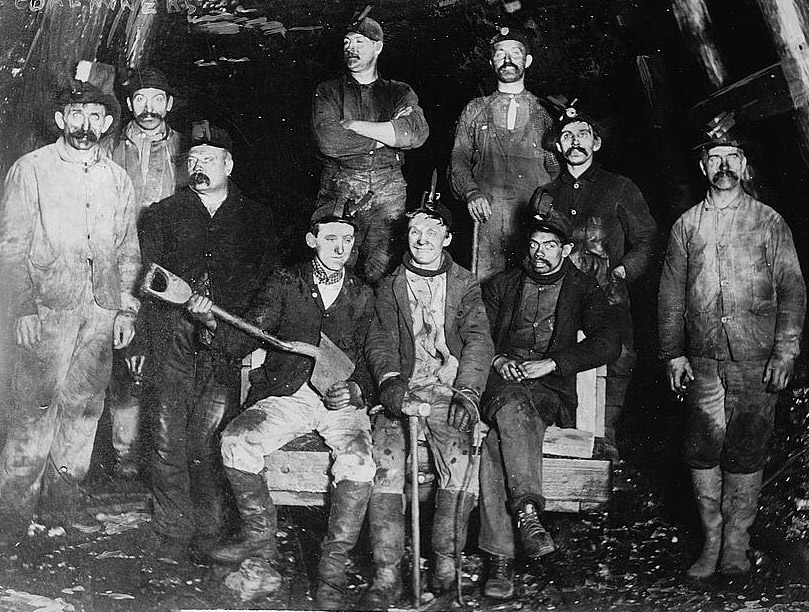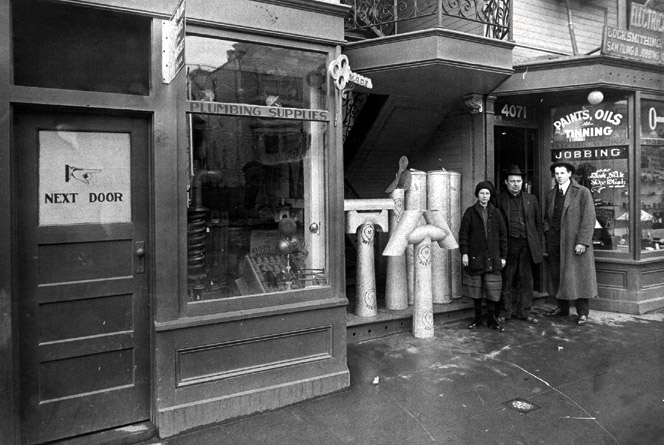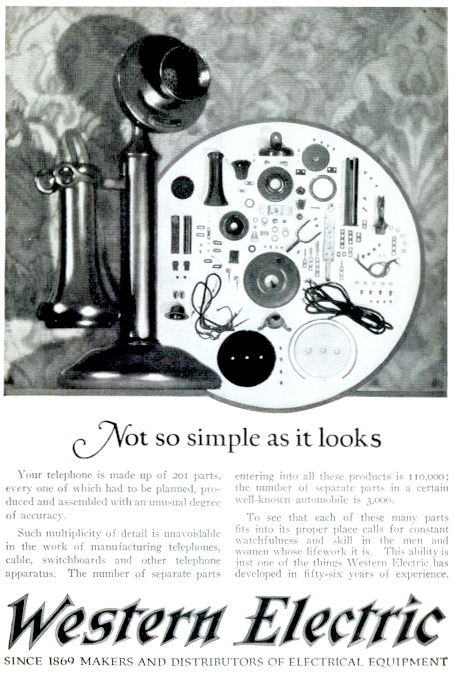
Kenneth Brown McIntyre
(1906-1961)
Armed with only a grammar school education my father was off to Alaska to find Gold, leaving his parents, sister and brother behind. Bold for any boy of only 17.
Arriving in America from Ireland in 1855, the McIntyre clan settled into the community around Sparta, Illinois.
The McIntyre name, along with the name Adams, was everywhere in Randolph County, Illinois. They were all either farmers or coal miners – no doctors, lawyers or Indian Chiefs – that I know of.
My dad was born at home, in Eden, six miles outside Sparta, on March 19, 1906. Kenneth was the second child of Jane Adams and Martin McIntyre. Gladys was the first child, five years older than Kenneth and Thurlo would arrive five years later.
More than nine inches of wet spring snow covered the ground on that mid-March Monday in 1906. Home births were common in rural areas then – along with maternal death. Can you imagine how scary it might have been – isolated in the midst of a snowstorm?
Did the doctor make the six miles through all the snow? How did the doctor even know when to come? Who was there with my grandmother to help deliver her new baby boy? Did my grandfather deliver his son with the five year-old sister helping?
Despite the dangers, my dad’s birth was a success. Before long the family moved into town and bought a home. I visited that home often as a young boy and can still picture each room. The house had two bedrooms and one bath, a parlor, dining room and kitchen with a wood stove used for both cooking and for heating the entire house.There was a front porch facing Main Street and two side porches – a barn, smokehouse, and fruit cellar all located on a regular city lot. Many McIntyre and Adams families made up the neighborhood.
My dad, K. B. (he always used his initials, like our son today), grew up in this small town – school, church on Sunday, chores and odd jobs. His only big decision was what to do when he graduated from grammar school at age 15 in 1921. More school was not part of the discussion, let alone college.

Better to head west and pan for gold in an open stream, reasoned my dad when he headed for Alaska at age 17.
Work choices were limited and the ones he saw were not good. His dad, and the other men he knew, labored for long hours in the coal mines – that work was both dirty and full of danger.
My dad saw his father go off to the mines early each morning and return late at night – covered in coal dust, dead tired with only time to eat and sleep just to do it all over again the next day – six days a week. While that life may have suited others it was not for my dad. There must be something better.
Bituminous coal was plentiful in the southern part of Illinois. That variety is the softer, cheaper and dirtier coal that was in demand for railway locomotives and stationary steam engines.
Choices Do Matter and my dad decided to leave behind everyone he knew for a chance to strike it rich in the Alaskan gold mines. He could live out in the open air, in beautiful country, and get rich quick. All he needed was a pan, tweezers to pick up the gold from the pan and a vial to hold the riches.
At 17, he gave everyone a big hug, said goodbye to his family and boarded the train west – alone. His parents were not wealthy and he was too young to have saved much – somehow he had scraped together the money for his trip.
When Gold Fever strikes you have to deal with it head on. That must have been quite a journey for anyone – let alone a boy of 17.
The first leg of his trip took him to San Francisco. The City by the Bay was nothing like the farms and coal mines back home. He decided to stay for a time – to rest and enjoy his new freedom before continuing on to Alaska.
San Francisco at the start of the Roaring Twenties must have been incredible – take all we know of the Jazz Age and multiply it by the charm and swagger of this newly rebuilt city after it was leveled in 1906 by a devastating earthquake and fire.

I can only imagine the sights and sounds my dad experienced during his young years in that town. I do know he picked up a tattoo in San Francisco. It was a heart with a dagger – with an open spot for a name – placed on his upper left arm. As he didn’t have a girlfriend, he must have planned to add the name later – when he met the right gal.
I know he regretted his choice later because I could never get him to talk about his tattoo. He didn’t leave that heart in San Francisco – it followed him all his life.
San Francisco, with all of it’s excitement was just too much for a midwest boy – it was time to get back on course. He continued up the Pacific Coast towards Alaska when everything caught up with him – he was home-sickness. Alone, on the city streets of Seattle, he began to calculate his financial situation – he had enough to make it to Alaska, but what if he did not find gold the first day – or first week or even the first month?
Walking along the street, a store front sign caught his eye, “We need men to build telephone offices.”

Dad went in – asked for work and got the job at Western Electric. He learned quickly, followed instructions well – connecting wires with a soldering gun. He enjoyed the work and began to settle into Seattle life. He had friends now and was slowly coming out of his home-sickness.
He wired home and invited his older sister, Gladys, out for a visit.
The two had a great time and Gladys fell in love with both the city, and one of dad’s coworkers, Al Lunstead. They later married and would visit the midwest over the years, but they spent their entire working life in Seattle and retired in Hawaii. I am sure Aunt Gladys would say that visiting her homesick brother in Seattle was a good choice.
Before long, dad’s condition returned – homesickness can spoil any adventure.
Dad went to his boss to say that even though he loved his work with Western Electric, he was returning home to Illinois.
The boss quickly said, “Not so fast, K.B. let me look into something for you.” – his boss returned the next day, asking how far St. Louis was from dad’s hometown. “Not far at all,” dad said.
“We need men in St. Louis.” The boss said. “Why not let the company transfer you to St. Louis? The company will pay for the trip and you will have a job waiting for you when you get home.”
Perfect. Dad kept the job he loved plus his trip home was paid for – besides there probably wasn’t that much gold in Alaska anyway – he may have reasoned.
There is honor in finding what you enjoy and making a full life of it – life is more than grabbing the brass ring on a merry-go-round.
Dad settled into St. Louis. His hometown of Sparta was only 50 miles away – he could visit often. His salary let him buy some better clothes along with a nice car. It was 1926 and life was good.

There was a young lady that continued to catch his eye at work – she was always smiling – enthusiastic and seemed to be a lot of fun. He had tried to get an introduction, but unlike my ‘love at first sight’ years later, times were different then.
She finally agreed to go out. Only much later did dad learn why.
My mom and dad were born about 200 miles apart – mother headed off to Miami Beach and my father sought his fortune in Alaska, making it only to Seattle. They both returned – near where they started – sometimes you can find a four leaf clover right in your own back yard. They married on December 16, 1928.
Dad found the name to put in the spot on his tattoo, but the spot stayed blank all his life. He either never asked mom or she refused. I wonder still.
Dad spent the next 38 years with Western Electric before his death at age 55 in 1961.
What was your dad’s story?
How about your parents, do you know how they met?
Do you know others who have set off on journeys to find happiness – only discovering it when they returned home?
As always, the conversation starts here.
